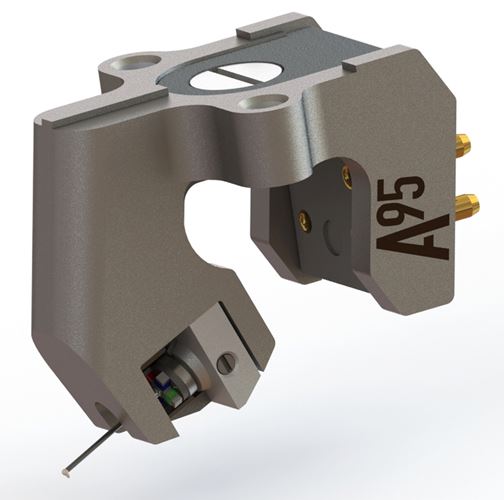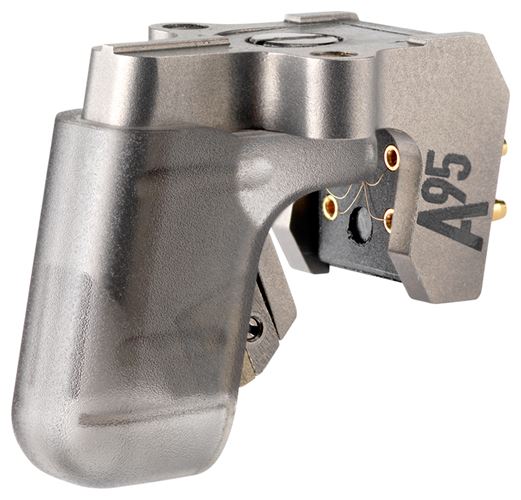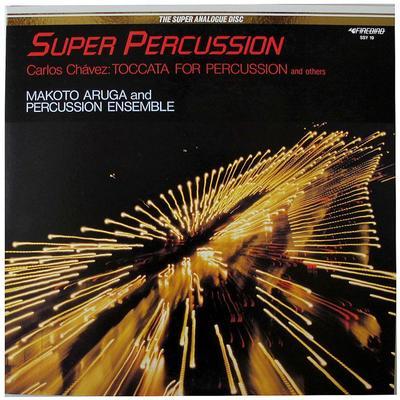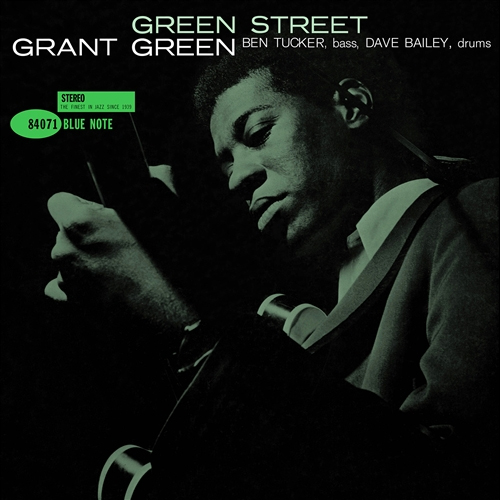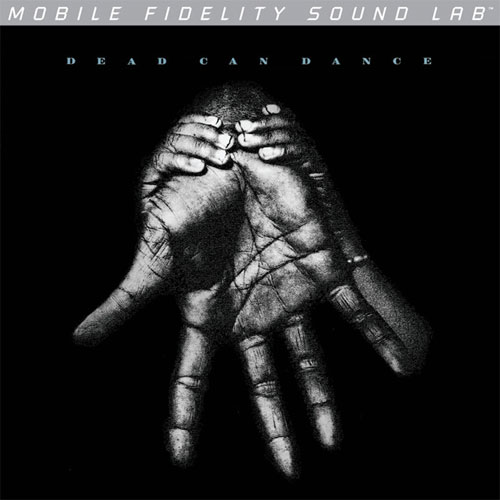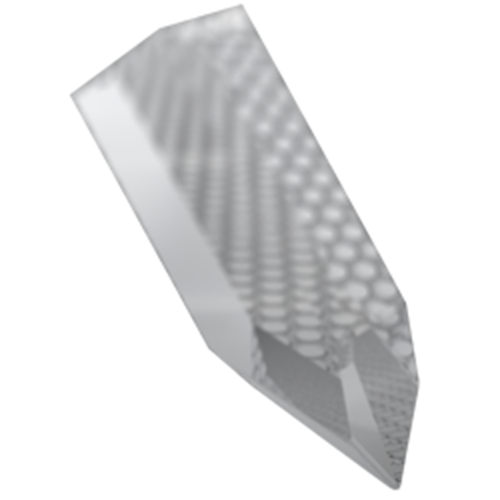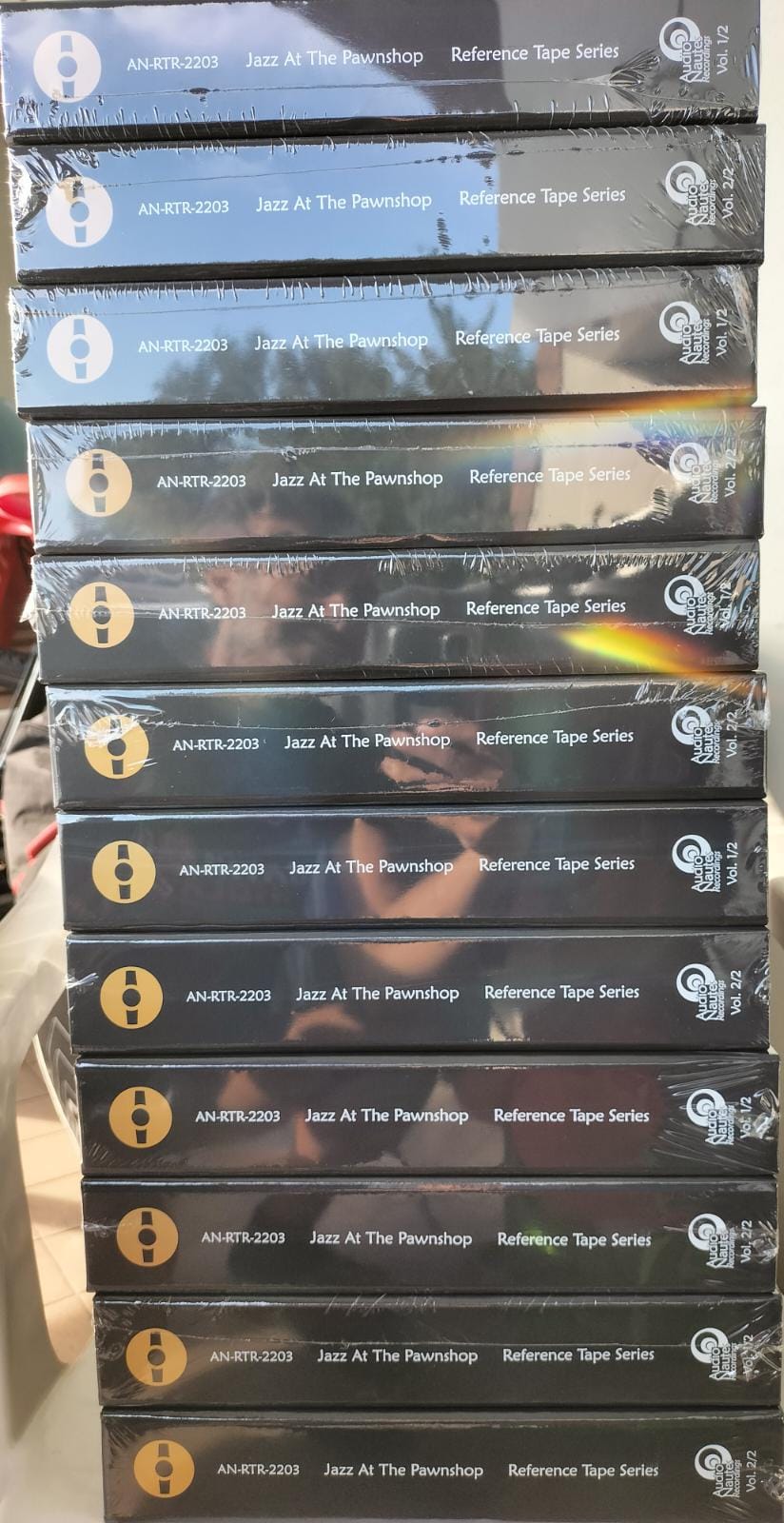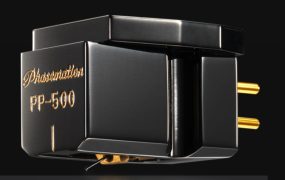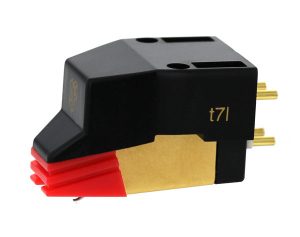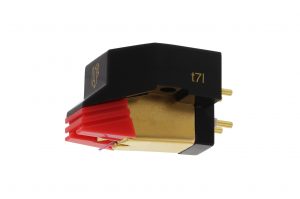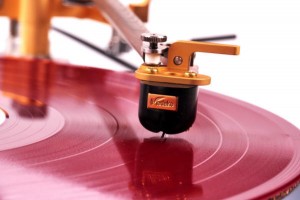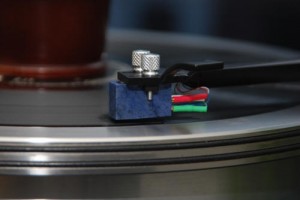Amazingly the Ortofon MC A95 Moving Coil Cartridge is the very first Ortofon transducer—particularly given the company's long tenure in the cartridge field—that I've ever reviewed. Now part of that oversight was availability. Part of that oversight was having a phono stage capable of amplifying very low output moving coil cartridges without the addition of noise or loss of dynamics. But make no mistake. The combination of the latest Doshi V3.0 phonostage and conrad-johnson GAT preamplifier Series 2 proved more than up to the task of dealing with MC A95's particularly low 0.2 mV output.
First, just a little in way of background information. Ortofon released the MC A95 a year ago to mark their 95th year the audio industry. And MC A95 does more than just commemorate Ortofon's anniversary! It celebrates it in style. The MC A95 is far and away the best $6500 cartridge to pass through my system having much in common with today's super cartridges. Speed. Detail. Transparency. Neutrality. Dynamics. Moreso, the MC A95 won't embarrass any audio system it's used in including those assaults on the state-of-the-art. Yet—and what is somewhat paradoxical—the A95's character is a bit chameleon-like in certain respects and dependent to some extent upon the system it's used in. But more on that in a moment.
It so happened too in the course of the MC A95 review that a number of new pieces of gear also arrived for review. Consequently, the MC A95 was auditioned in—and used in the audition of—more systems than any other cartridge to date; each configuration revealed and painted a slightly different picture of the cartridge's capabilities. The first reference system included conrad-johnson's massive ART tube amplifier and GAT Series 1 preamplifier, Doshi Audio's latest 3.0 phonostage, VPI's Classic Direct turntable, and Magico's S5 Mk.1 speakers. The last system once again consisted of that old standby ART amplifier but this time accompanied by the latest GAT Series 2 preamplifier (more on that in a coming review but just in way of a preview let's just say it's a very significant update to an already great preamplifier), Doshi Audio's 3.0 phonostage, VPI's latest direct-drive Vanquish turntable, Magico's newest S5 Mk. 2 speakers and Transparent Audio's Reference XL Gen. 5 cables (some may wonder why Alon Wolf came out with a Mk. 2 version but one listen tells the tale).
Along the way, the MC A95 also saw service in an altogether different system consisting of the outstanding 50 wpc Kondo Kagura single-ended tube amplifiers, the absolutely magical Kondo M1000 Mk. 2 preamplifier and Kondo SUT and the Magico S5 Mk. 1. (in addition, the Doshi V3.0 phonostage was run into the M1000 Mk. 2). Another permutation included the Audia Flight Strumento No 4 solid-state amplifier paired with the GAT Series 1 preamplifier and Doshi Audio 3.0 phonostage. Finally, there was even an opportunity—albeit way too short—to audition the MC A95 in Marc Gomez's state-of-the-art $32,000 Swedish Analog Technlogies (SAT) tonearm mounted on the VPI Vanquish turntable. Each system and combination brought out and emphasized the MC A95's many different strengths; never once did the cartridge disappoint.
Setting the Table
Now for the good part! Once broken-in, the MC A95's "quietness" nee transparency and neutrality proved a winning combination. The cartridge simply doesn't add much of its own character or flavor to the sound nor does it does it stand in the way of enjoying and appreciating the music. Songs such as "Come Back Liza" or "Day O" from Belafonte at Carnegie Hall (RCA LSO 6006; original or Analogue Productions reissue) simply come to life in both in terms of breadth of sound and realism. In fact, never better than when mounted in the SAT arm. Not only can you map out to the last inch where each musician is seated on stage but there's an uncanny defined sense of Belafonte in the flesh. Belafonte is literally handed a roadmap for his trip around the stage. Not unlike what a good master or safety tape brings to the table. Conversely, the MC A95 won't sugar coat recordings either. The transducer will give you the good with the bad. Every record sounds different and clearly this is not a cartridge for someone who wants all their records to sound good. But—and this is a big but—the MC A95 will improve the sound of some less than stellar recordings since some sonic issues are clearly related to the cartridge or cartridge tonearm matching.
More importantly, the cartridge demonstrates excellent linearity across the frequency spectrum. A linearity that especially compliments the most recent Magico S5 Mk. 2 speaker. That's in contrast to other moving coils where the designer in their quest to achieve neutrality lost some of the cartridge's midrange magic. Or an unevenness through the musical spectrum. Or an accentuation of the upper octaves. Not here. The MC A95 presents the midrange in an exceedingly natural manner without sucking it out or overemphasizing it. The cartridge— like the best coaches out there who don't let their team get too high nor too low—always manages to maintain a very even keel no matter how challenging the music or instrument. That linearity, quietness and neutrality—not unlike the best speakers today—allowed for greater resolution because there was less masking of information.
A pair of 45 rpm releases, Dream with Dean (Analogue Productions AP 076-45) or Elvis '57 (Analogue Productions 057-45), serve to illustrate this point. The MC A95 revealed with either of this pair of outstanding reissues the subtlest inner details of each singer's voice as well communicating the emotion of the song. More to the point On the Dean with Dream, the celeste at the beginning of "Everybody Love Somebody" was so incredibly delicate and at the same time awash in ambience and decay. In fact, the decay just seemed to extend on into the night. On the Essential Elvis '57, vol. 2, the cartridge did an amazing job of retrieving much of the inner detail and subtle intonations of Elvis's vocals along with reproducing the distinct tonalities of each of the Jordainaires on either the "Peace in the Valley" or "Have I Told You Lately That I Love You" cuts from side 4. Oh, and the MC A95 did a great job, especially mounted in the SAT tonearm, of unravelling what the crew in the control room are saying between cuts to Elvis and The Jordanaires as well as deciphering what The Jordanaires are saying to each other.
That said, the MC A95's tape-like dynamics weren't exactly chopped liver either! One was often startled by the cartridge's dynamic range. Now by tape-like, not only are we talking about the cartridge's overall dynamic range or unfettered sense of dynamic ease in the lowest octaves but its ability to render dynamic contrasts. That ability to transition between dynamic levels without drawing attention to itself. It's not about just the acceleration time but the ability to quickly change lanes. Take for instance one of my long time references Super Percussion (Super Analogue SSY 19). This recording has continued to sound better and better over the many years as my system has improved and just demonstrates an almost unlimited ceiling potential. What struck me the most here was how MC A95's quietness and transparency allowed the percussion instruments and drums to stand out from the rest of the recording space. Plus not only the dynamics of the individual drums but the differences in tone and dynamics between these instruments. And feeling the impact! Interestingly, the MC A95's dynamic presentation—in contrast to its other qualities—remained pretty much constant from system-to-system. About the only fault here was a slight loss of impact in midbass region relative to the upper and lower bass eg. there was a touch overdamped sounding in the midbass region.
Another area where the MC A95 really distinguished itself in all systems and configurations was its speed, resolution and detail. The MC A95 possesses razor sharp transient attacks with almost no evidence of that etching that wears the listener down faster than you can say ouch. Done correctly, however, this kind of quickness reduces smearing and increases the silence between the notes. That silence that also aids in recreating the composer's rhythmic intent. One test of the MC A95's resolution is the highly recommended reissue of Grant Green's stellar recording Green Street (either Analogue Productions B ST-84071 [45 rpm] or Music Matter Jazz [33 rpm]). There's simply no mistaking both the sound of Green's guitar and guitar amplifier on the track "Round Midnight." Every note, vibrato and trill Green plays on this straight ahead version of "Round Midnight" is precisely rendered with amazing clarity. The music with the Kondo SUT took on even a little less mechanical and slightly warmer feeling than with the Doshi V3.0 phonostage and conrad-johnson GAT Series 2 preamplifier. Of course, the Kondo SUT was used with the Kondo silver wire while the Doshi/conrad-johnson was used the new Transparent Gen. 5 interconnects and in differentially balanced configuration. It was obvious that the very untraditional sounding silver Kondo IC also played a part in the sound differences between the two sets of electronics.
Interestingly, the MC A95's ability to reproduce spaciousness, detail and recreation of an instrument's harmonic envelope proved somewhat system dependent. For instance, the sense of space was very good with the Doshi phonostage/conrad-johnson GAT Series 1 preamplifier; used in conjunction with the Kondo SUT and M1000 Mk. 2 line stage, the MC A95 brought an even greater feeling spaciousness on cuts such as "Yulanga" from Dead Can Dance's Into the Labyrinth (Mobile Fidelity 2-001) or Schuller's "Kleiner Blauteufel" or Seven Studies on Themes of Paul Klee (Mercury Records SR90282-original). Installed in the SAT arm—and albeit only had a couple of days to listen to this combo—the music was just a little more fleshed out, less mechanical sounding with an impressive side order of solidity.
When and where the cartridge falls a little short of ultimate—and the performance of today's super cartridges—the MC A95 does so in a slightly subtractive fashion. Nonetheless, the MC A95 gives those more expensive cartridges retailing for two to three times the money a real run for the money. Nonetheless, whatever these faults may be, they never interfere the cartridge's musicality or the enjoyment of the music. For instance, where the MC A95 falls the furthest from today's best is in the area of soundstaging. No it doesn't quite have the enormous soundstage—in particular the wall-to-wall plus width—of say an Atlas SL. But let's be clear here. The MC A95's soundstage, however, is absolutely no slouch either. Yes it's that good. In fact, only in the case of direct, head-to-head comparisons does the MC A95's slightly smaller soundstage emerge. The MC A95 also falls a little short of ultimate when it comes to harmonic completeness. Here, the MC A95 just doesn't quite flesh out the instrument's tone and harmonic envelope. Nor does the MC A95—say on the best recordings—quite retrieve the last vestiges of a recording's ambience. Nor will it in the low end quite satisfy with the real fullness of drums. But again, when considered within the context of the overall picture, picture and price of the MC A95, these really are minor points.
A Breakthrough for the Money
The Ortofon MC A95 is hands down one of the finest moving coil cartridges available today. Properly set-up, broken-in—and in a system with enough gain to handle its miniscule output—this moving coil cartridge will satisfy the ears of just about any audiophile and toughest critic. Most of all, the MC A95 is a great introduction to the Ortofon "sound" and there's no doubt that this cartridge will do justice to just about any system it will be used in!
Now I am sure some readers are interested in how does the MC A95 compare to its predecessor the A90. While I didn't have the A90 in my system, it's my "impression" based on hearing that transducer in a number of systems that the MC A95 isn't as cold or etched sounding. If anything, the new MC A95 errs just ever so slightly to the yang side of neutral.
Based on what Ortofon achieved with the MC A95, I'd sure like to be around in five years hence to hear their 100th anniversary cartridge! One thing is for sure, vinyl isn't going away and neither is Ortofon!
Technical highlights
Ortofon has been manufacturing moving coil cartridges for almost 70 of its almost 100 years in business. In that time, Ortofon has amazingly designed and built close to 300 different cartridges. The Ortofon website is extremely thorough so I suggest readers visit www.ortofon.com for more technical information regarding the MC A95. One suggestion though. All owners (or potential owners) should check out the MC A95 stylus care section.
In a nutshell, the cartridge is manufactured using SLM (selective laser melting) or as Ortofon reveals on their website is, "another name for 3D printing." According to Ortofon, one of the advantages of using the 3D printing is that it, "enables the consolidation of components to allow for a design devoid of unnecessary material. In this case, all of the essential components are built directly into the one-piece body, including the magnetic system (including the moving parts), the terminal block, and the silicone rubber wire guard." Another advantage to the 3D printing process is according to Ortofon, "The RM technology has given us a bigger creative designing space, because we are no longer limited by a particular geometric shape. We do not produce tools, which means that the production process is reduced to a few weeks where it before took between 4 to 6 months. The time factor means that we can now try out our ideas, and it gives us an enormous amount of freedom."
A few important things about the MC A95 setup. First, quite a bit has been made about the cartridge's Replicant 100 stylus profile and critical alignment. Let it be said that no one should be scared away from purchasing this cartridge because of the stylus shape. I didn't find the MC A95 any harder to set up than most top tier cartridges. In fact, the nude body (like the Atlas) makes set-up an absolute breeze.
Next, the MC A95 took a very long time to break-in. Supposedly Ortofon sent a broken in sample for review, but it sure didn't sound like that. (Or that whoever previously used this cartridge never broke it in.) For roughly the first 50 to 70 hours, I was less than thrilled with the sound of the MC A95 and found it difficult to work up any enthusiasm for the cartridge. That despite the cartridge's very impressive dynamics and speed. Then something magical happened and the cartridge's character changed from that proverbial ugly duckling (being too cold, thin and analytical) to that beautiful swan (much more relaxed and musical sounding).
Finally, the MC A95 cartridge mounted in VPI's 3D tonearm was perfectly happy tracking at 2.3 g. One word of warning though. One will need a lighter counterweight with the newest 3D arm since the weigh-in weight of MC A95's places it firmly in the flyweight class. Interestingly, Marc Gomez was able to set the tracking force for the MC A95 in his super stable SAT arm at 1.7 gms (roughly 0.6 gms lighter than the VPI 12-inch 3D arm). And the Ortofon tracked perfectly so there's something to be said about less stylus and cartridge wear. Azimuth was set with a calibrated Fozgometer and both VTF and azimuth were fine trimmed with the now standard supplied VPI Soundsmith Counter-Intuitive. It was very easy to play with cartridge loading given the Doshi's remote control loading (not to mention ability to preset two different loads and switch between the two remotely). When the dust settled, the MC A95 seems most happy with a loading of 100 ohms though I could see some listeners preferring ten ohms higher or lower.
Specifications
- Output voltage: 0.2 mV (at 1000Hz, 5 cm/s)
- Recommended tracking force: 2.3 g
- Frequency response: 20 Hz-20.000Hz +2dB/- 1dB
- Compliance, dynamic, lateral: 13 µm/mN
- Stylus type: Special polished Nude Ortofon Replicant 100 on Boron Cantilever
- Tracking angle: 23°
- Internal impedance, DC resistance: 7 Ohm
- Recommended load impedance: > 10 OhmCoil wire material: Aucurum
- Cartridge body material: SLM Titanium
- Cartridge weight: 6 gram
Ortofon MC A95 Moving Coil Cartridge
Retail: $6500
Ortofon
For a little more information, see this interview with Per Windfield, head of cartridge R&D at Ortofon from 1976-2006. http://www.ortofon.com/about/interview-with-per-windfeld




